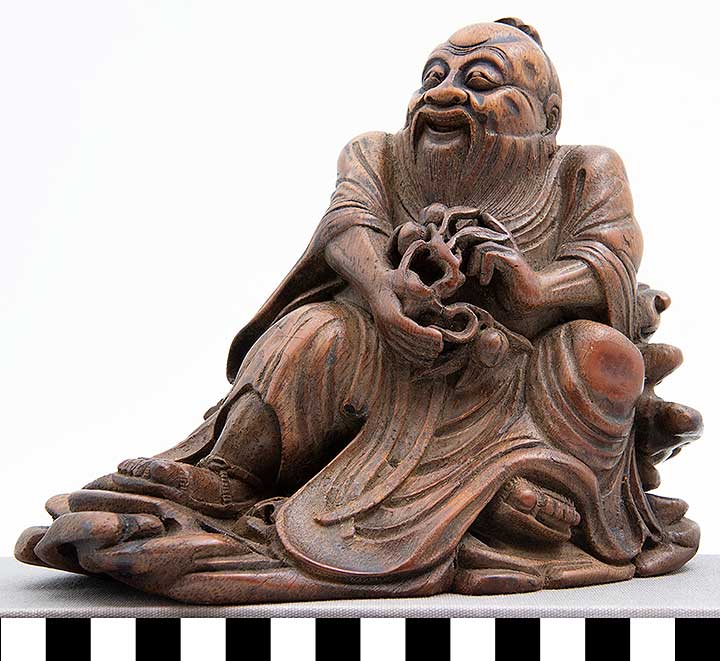Carving: Dongfang Shuo
2011.13.0002
Detailed Images
Basic Information
| Artifact Identification | Carving: Dongfang Shuo (2011.13.0002) |
|---|---|
| Classification/ Nomenclature |
|
| Artist/Maker | Jiading School |
| Geographic Location | |
| Period | Reign of Kang Hsi (1662–1722), Qing Dynasty (1644-1911) |
| Date | 18th century |
| Culture | Chinese |
Physical Analysis
| Dimension 1 (Length) | 17 cm |
|---|---|
| Dimension 2 (Height) | 16.5 cm |
| Dimension 3 (Width) | 10.2 cm |
| Weight | 548 g |
| Measuring Remarks | N/A |
| Materials | Plant--Wood |
| Manufacturing Processes | Carved |
Research Remarks
| Description | Under Review |
|---|---|
| Published Description | N/A |
| Bibliography | Under Review |
Artifact History
| Credit Line/Dedication | Fred A. Freund Collection |
|---|---|
| Reproduction | N/A |
Contact
All information about our collection is constantly reviewed and updated. Please contact Dery Martínez-Bonilla, Registrar, if there is any information you are looking for that isn't currently online.
